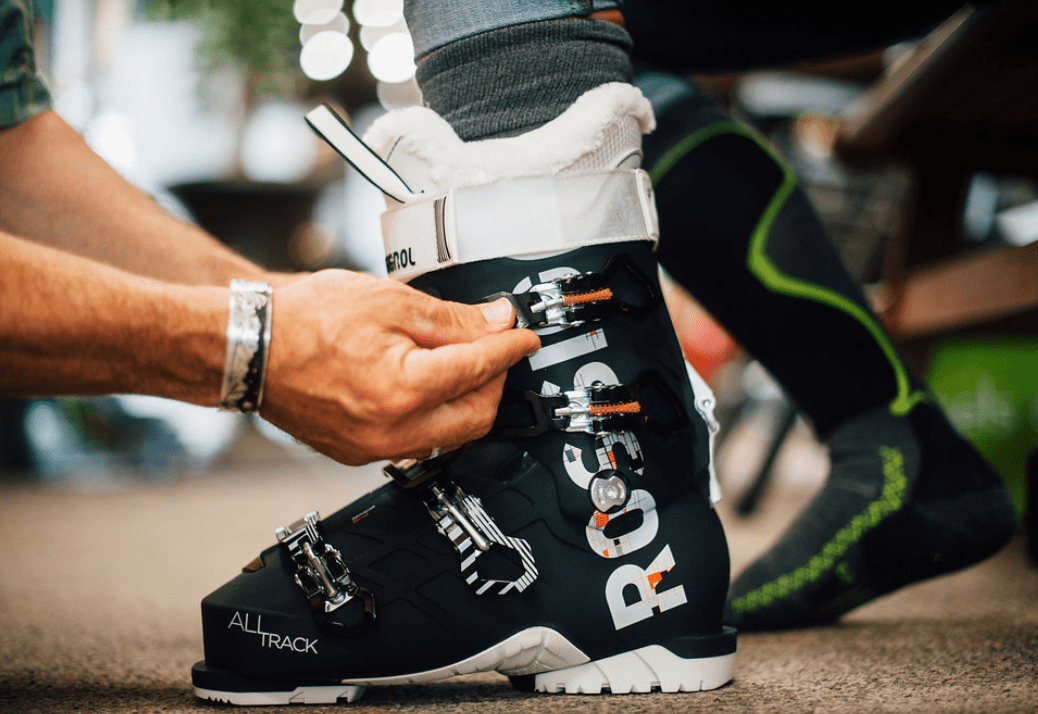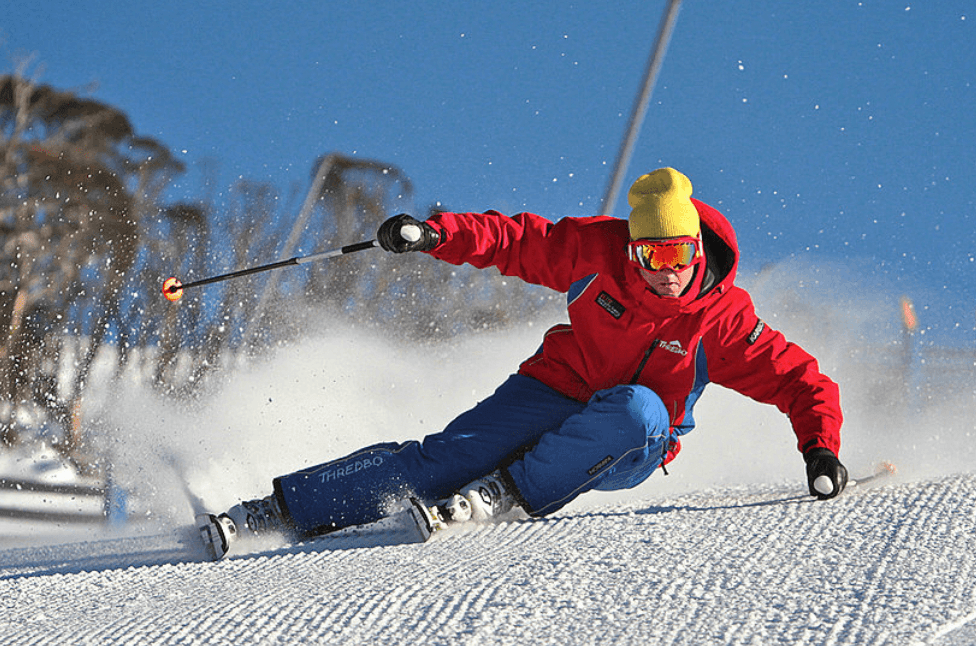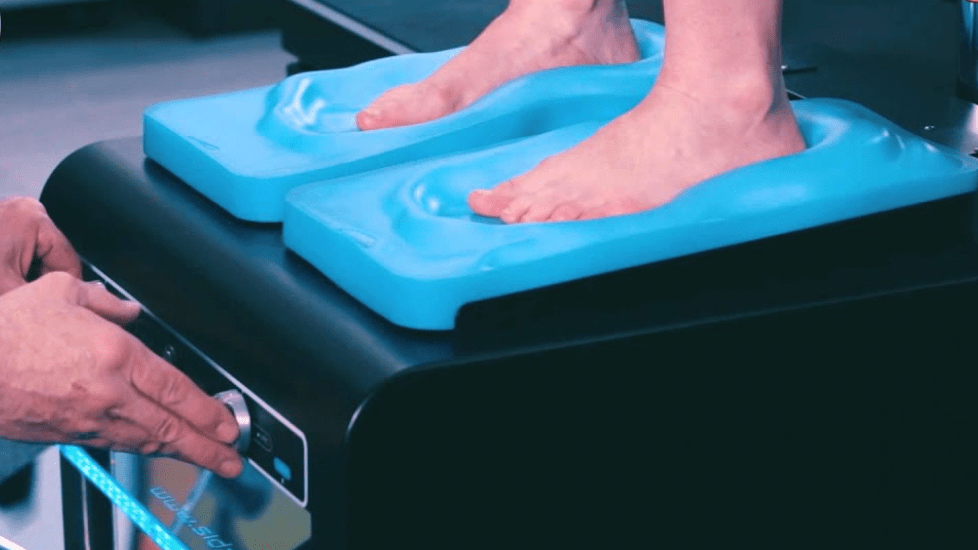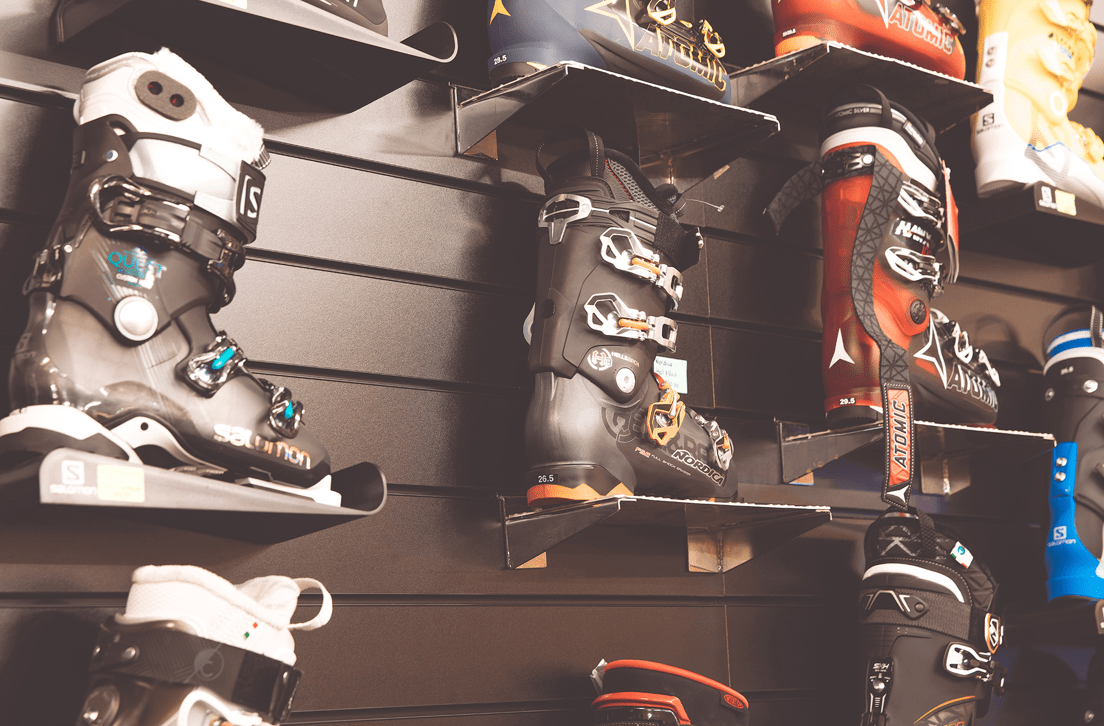
Bootfitting is a science. Each foot is a unique recipe of measurements, and a good boot fitter, like a scientist, will combine that information to find your “sole-mate.” Ski boots are the most important piece of gear to invest in when it comes to ski equipment. And a great knowledgeable boot fitter will help build the perfect foundation for you to ski comfortably and efficiently all day. Nick Manely is one of those boot fitters. He’s been a boot fitter for ten years now, helping hundreds of skiing enthusiasts find their perfect match.
First, an analysis of your foot is done based on measurements, including the length, width, instep, and volume of your foot. All of this information creates a unique recipe that influences what brand, flex, and style of boot will fit your foot, like a glove. Even your calf will impact how a boot will fit. Boots are the foundation of your skiing. Your ski day can be cut in half without proper support or fit.

The most important characteristic of a proper fitting boot is that it fits tightly enough to become one with your foot. Picture a bouncing basketball, like the ball your foot and boot capture and recycle energy generated by skiing. A good boot fitter’s goal is to find a boot that will become one with your foot to efficiently reuse that energy all day.
Since the boot and your foot will act as one, your skis will have a more precise reaction to movement, whether you’re carving up the groomers or ripping through a mogul field. By recycling the energy generated in each turn, your body will have to work less and be rewarded more. As a result, skiing will become easier as you will have a precise connection with your skis. Boots do not have to be painful – happy feet equals happy skiing. According to Nick, the perfect boot should be comfortably tight, just shy of a “Pink Floyd” boot, comfortably numb.
Nick explains how the most challenging part about fitting a boot is describing how a ski boot should properly fit and convincing the customer that it is their size. When a customer shoves their foot into a boot, and their toes immediately slam to the end, their first thought is it’s way too small. Because of this, 50% of boot fitting is purely psychological.
Footbeds also provide an essential amount of support no matter the arch. Even people with the flattest feet can benefit from a footbed, as it allows for support for your foot. With different options like custom footbeds customized to your feet or just drop-ins sized based on the arch, it can provide more natural support for your foot, allowing it to further become one with your boot.

Nick’s top 5 rules for a proper fitting boot:
-
- Make the boot one with your foot
- A complete surround sound fit; every part inside the boot should be touching the foot.
- Nothing should be in the boot except for your foot and proper fitting ski sock.
- Proper arch support; footbeds are necessary to build a solid foundation for your foot. Even those with flat feet need footbeds.
- Put the boot on when it’s warm. Don’t leave it in your car overnight the day before your trip or drive up to the mountain with it in the back of your truck.
There is a lot to account for when fitting a boot. But Nick recommends keeping KISS – Keep It Simple Stupid – in mind. Don’t overanalyze and trust your boot fitter. Most often, the first boot they bring out will be your perfect fit. They did a lot of “sole-searching” before bringing it out for you to try it on!
